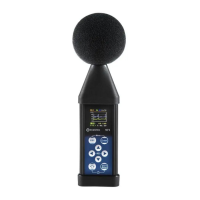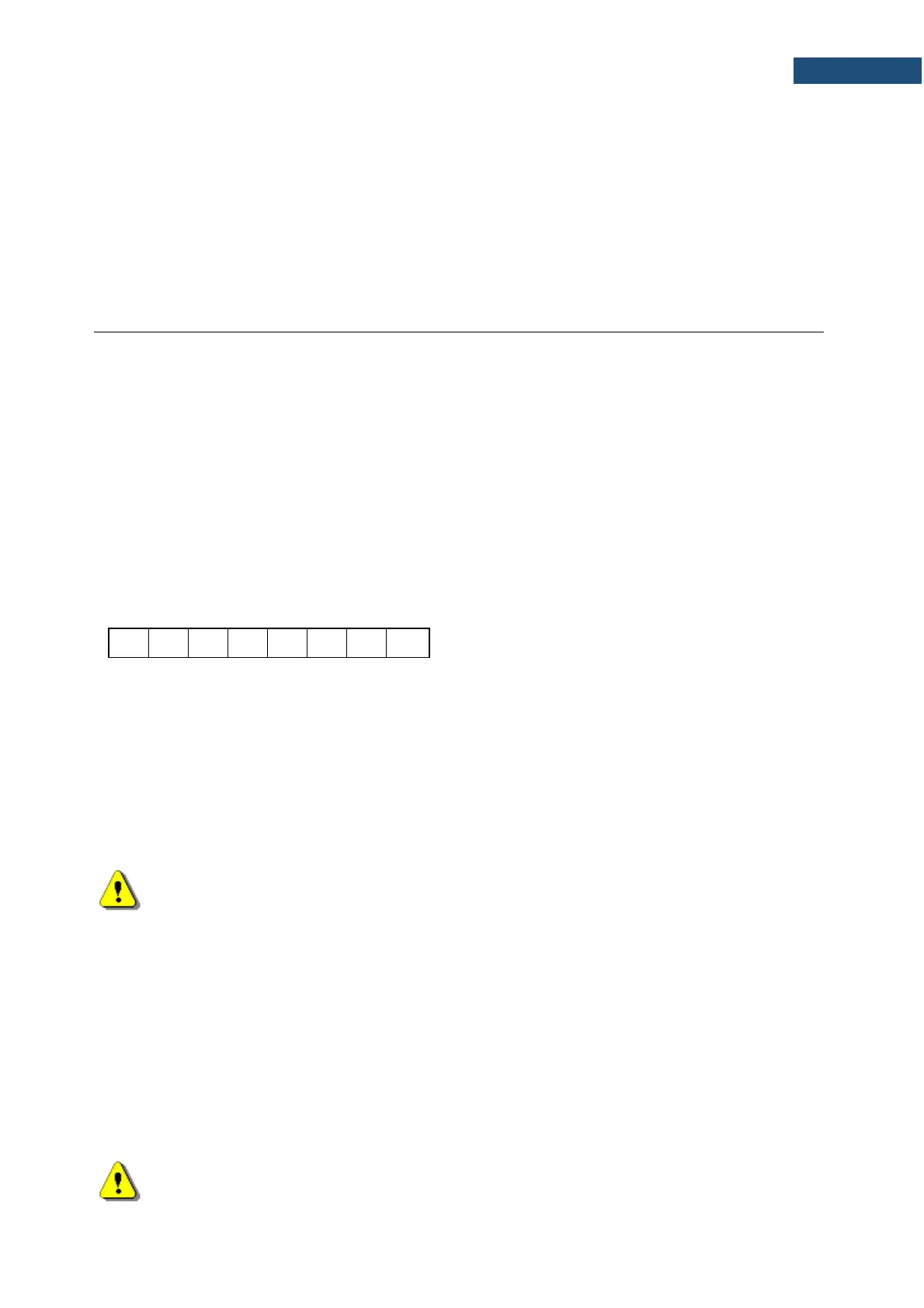SVAN 973 User Manual – Appendixes
#D,m,?; - command cannot be executed
9) #D,f,<address>; function enables the user to delete directory and its contents (files and
subdirectories):
Response:
#D,f; - command was executed
#D,f,?; - command cannot be executed
A.7 FUNCTION #5 – STATISTICAL ANALYSIS RESULTS READ-OUT
#5 function enables one to read out the statistical analysis results.
#5 function format is defined as follows:
#5,p;
where:
p - the number of the profile (1, 2 or 3)
The device responds, sending the current classes of the statistics in the following format:
#5,p;<Status Byte> <LSB of the transmission counter> <MSB of the transmission counter>
<NofClasses><BottomClass><ClassWidth><Counter of the class> (...) <Counter of the class>
Status Byte gives the information about the current state of the instrument.
where:
D7 = 0 means "overload does not happen",
= 1 means "overload appeared",
D6 = 1 reserved,
D5 = 0 instantaneous current result (RUN State),
= 1 final result (STOP State),
D0 to D4 reserved bits.
Note: There is not any succeeding transmission in the case when the Status Byte is equal to
zero.
The transmission counter is a two-byte word denoting the number of the remaining bytes to be
transmitted. Its value is calculated from the formulae:
Transmission counter = 6+n * (4 * the number of the classes in the statistics)
where:
n the number of the transmitted statistics. For p = 1, 2 or 3 only one statistic is transmitted (n = 1).
NofClasses is a two-byte word denoting the number of classes in the statistic.
BottomClass is a two-byte word denoting the lower limit of the first class (*10 dB).
ClassWidth is a two-byte word denoting the width of the class (*10 dB).
Counter of the class is a four-byte word containing the number of the measurements belonging to the
current class.
Note: The bytes in the words are sent according to the scheme <LSByte>..<MSByte>.

